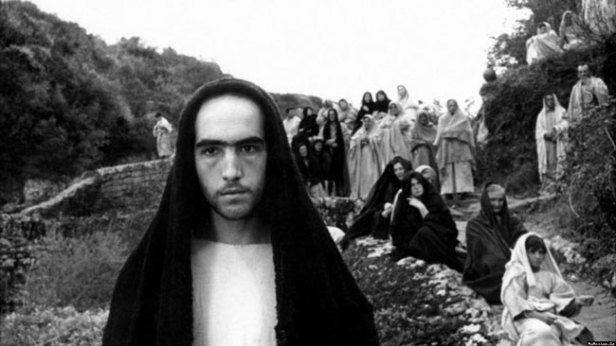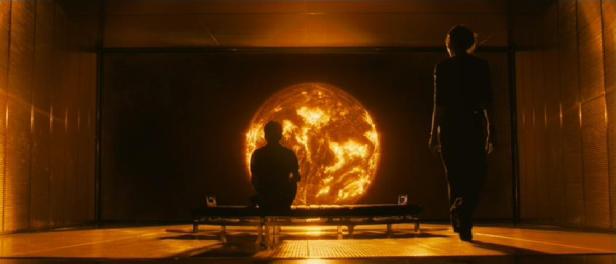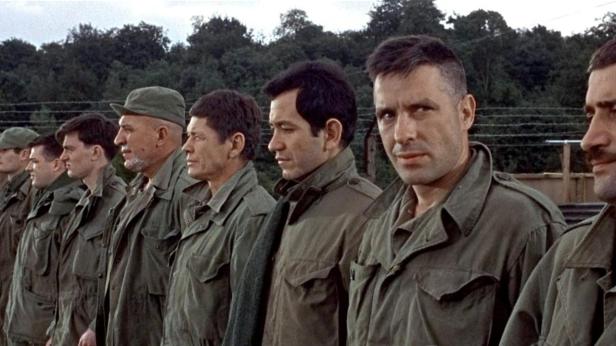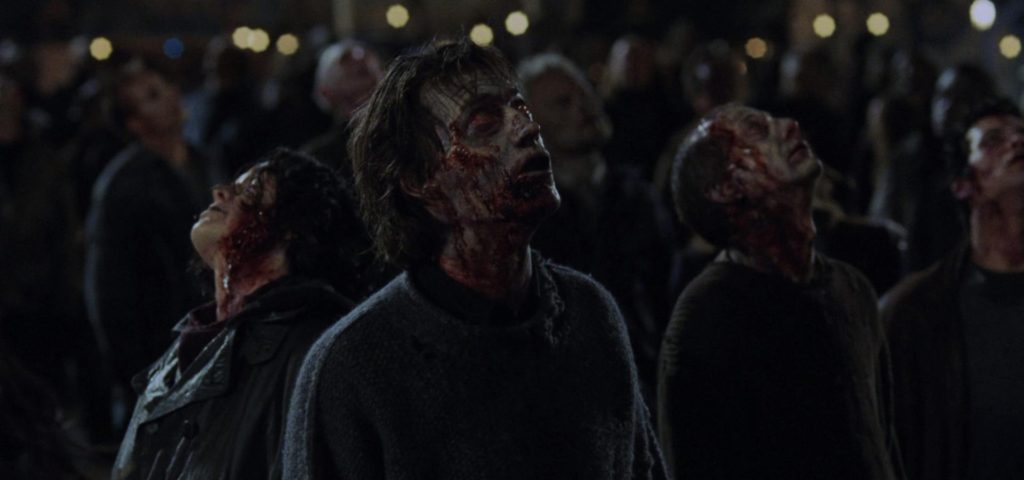I’ve had a lot of time in the past two weeks to watch movies since my day-job was placed on furlough. Don’t feel too bad for me. I’ve longed for a vacation for MONTHS and thankfully I’m in a good financial position to ride out the next few months should COVID-19 continue to burden society well into the early summer. In any case, dealing with sudden swaths of free time is a strange sort of burden to the soul. Humans are beasts of burden and the moments all of my burdens were let loose from my shoulders I briefly had to cope with the reality that I needed something to do. Nearing the end of the second full week that the state of Illinois has been on mandatory lockdown, I’m finally starting to settle into a good pattern. I spend a few days working with my maternal grandfather on his gardening projects and then returning home for a few days to lay in bed watching movies. It’s gone a long way to keeping myself emotionally balanced and preoccupied.
Boy oh boy do I have a lot of movies to watch. My “to-watch” pile in my bedroom has been a beast for longer than I can remember. Ever since I started collecting movies, I’ve had a pile near my dresser of cheap DVDs and Blu-rays I purchased at random times which I’ve always said: “I’ll get around to watching”. For almost half a decade, that hasn’t been the case. Now that I’m suddenly burdened with time, It struck me that now is a good time to finally seriously tackle the infamous DVD stack with abandon. If I can watch 5-6 movies a day some days, I should do that! Granted, it’s not that productive a use of my time. I could be working on a book or finding other projects to keep me busy but this has legitimately bothered me for a long time. I might as well use my vacation time to rest while taking care of something that has bothered me for a while.
Since the start of the quarantine, I’ve managed to pour over roughly 25 movies in my spare time in addition to watching a few episodes of Star Trek: The Next Generation. I’ve had sporadic thoughts on all of the films but nothing concrete enough to want to stop watching movies and spend four hours on an individual essay in full for one of the websites I write for. That said, my thoughts have swirled around enough that I feel like I could share some brief nuggets of wisdom with anyone who cares to hear them.

Please note that there’s no clear order of theme or coherence that I’m viewing these films in. I watch whatever seems appropriate for my mood at the time I’m watching it, although I generally pick less intellectually engaging films before bedtime or in the mornings. I’m also not going to bother mentioning some of the more contemporary films I managed to catch like Color Out of Space and Superman: Red Son since I already gave them full reviews for Geeks Under Grace and they weren’t previously on my DVD pile.
With that, please enjoy my mad ramblings!

The Gospel According to St. Matthew (1964) by Pier Paolo Passolini
Maybe the most interesting film I finally got around to watching this month. I’m preparing a larger Flawed Faith essay on this film since it might actually be one of the best religiously themed films I’ve ever seen. Italian director Passolini only used the Gospel of Matthew in the Bible as the script for this almost documentary-like retelling of the story of Christ. That leaves large stretches of the story with characters who have nothing to say but if you’re already familiar with the events, this retelling will be haunting and magical. Each word is given weight and framed exquisitely in some of the most beautiful black and white cinematography I’ve seen. Strangely enough, the director was a gay, Marxist, atheist and yet he approached the material with reverence and told a better Christ story than many religious directors ever have.

Richard III (1995) by Richard Loncraine
I wanted to wait to watch this Shakespeare adaptation until after I finished reading the play it’s based on. Last week I took a day, sat in the park under a tree for several hours and finished the play in a sitting before returning home to watch the movie. It was worth it! Ian McKellan plays the titular character to perfection in this adaptation which casts the famous tragedy against the rise of European fascism in the 1930s. It’s gimmicky but it’s very fun to watch if you like the original play!

Last Action Hero (1993) by John McTiernan
I didn’t realize going into this film how much fun I was going to have. Granted, I should’ve known because this film was written by the great Shane Black. The movie is a spoof of Schwarzenegger films of the 1980s and the macho-megastar image that the star had built by this time with franchises like Terminator, Conan and Predator under his belt. Black turns that celebrity on its head by making a family movie about a kid who is sucked into one of his favorite star’s action movies. It’s a really funny movie that plays with a lot of the plot logic and conventions of buddy-cop action movies of the time.

Conan the Barbarian (1982) by John Milius
The other major Schwarzenegger film I watched was the first of the two Conan movies. In truth, it’s more than a bit messy. The introduction is pretty strong and sets up Conan’s character very strongly but once the story turns into a wandering Conan bumbling around with a snake cult the film loses its steam. For what it’s worth though, the movie is almost entirely surviving off of Arnold’s raw masculine energy. This is the kind of movie that revels in the lead character being an animal-like savage warrior and it doesn’t shy away from how brutal and cruel that makes him. It’s not hard to see why this was a star-making performance.

Bananas (1971) by Woody Allen
I’ve watched a lot of Woody Allen films in the last two weeks (as will become obvious) and one of the things I’ve enjoyed seeing is just how much he’s able to build a film around a premise for his comedies. Bananas is one of his earliest directed films and here he displays his ability as a joke-smith and a satirical writer beautifully. There’s a great classic Woody Allen premise in the idea that a man would go off and join a South American revolution just to impress a cute woman back in America and here is covers the full gambit of his neurotic personality as we realize just how bumbling a revolutionary he would be.

Shadowlands (1985) by Norman Stone
If you’re familiar with Shadowlands, then you’re probably more familiar with the Sir Richard Attenborough version of the story. That critically acclaimed biopic wasn’t the first version of C.S. Lewis’s later years adapted to film. Almost a decade prior, a made-for-TV version based on William Nicholson’s stageplay was made. It’s a much lower budget production and it shows. Still, Nicholson’s script is still great even with lesser-known actors and it serves as an interesting contrast to the film version.

Sunshine (2009) by Danny Boyle
Danny Boyle and Alex Garland’s second film together after 28 Days Later was a box office failure with many notable and aggressive critics. That’s a shame because it’s an immensely beautiful and emotional science fiction film that desperately needs a second appraisal. The film is nominally a space-flight film that follows the crew of the Icarus II on a trip to the sun on a mission that will either save or doom the planet Earth depending on its success. The film is a semiotic dream with dozens of allusions to classical mythology, Christian symbolism and contemporary questions of religion and science. I can’t recommend it enough!

The Front (1977) by Martin Ritt
This movie creeped me out… The movie follows Woody Allen as a bozo who ends up becoming a front man for a group of Communist writers during the “Hollywood Blacklist” of the 1950s. The movie is trying to articulate the culture of fear and oppression that was stirred by the US government at the time and it does so admirably. At the same time, it scarcely explores why being a “communist sympathizer” might have been a bad thing in the first place. I’ll be honest and say I have some sympathy for honest leftists who were run out on a rail for their opinions but there were legitimate communists in Hollywood and the US government who had ideological and financial connections to the Soviet Union. The blacklist happened for a reason. This portrayal in the film might have something to do with its production staff and cast who themselves were run out of Hollywood for their communist views like Martin Ritt and Zero Mostel. It’s a funny comedy but it’s essentially a propaganda film for disheveled “useful idiots” who legitimately held disgusting views.

Dirty Dozen (1967) by Robert Aldrich
A great joy of the past few years has been getting to connect with my grandfather over classic war movies and westerns. Our most recent delve was into the famed action movie about a group of American prisoners who are trained for a suicide mission to take out a German outpost in France. It’s a long-winded and crass war movie (it was the 1960s) but it’s clear to see why this is one of the more famous Hollywood war films of the time. There’s a lot of great energy and performances in this film that elevates the film above a run of the mill war movie.

The Big Combo (1955) by Joseph H. Lewis
Gotta love Noir! This largely forgotten gem of Noir cinema has a fairly basic story where one police investigator is trying to pull on all the strings he can to arrest an infamous mobster with blood on his hands. What makes it interesting is how it’s shot and told. The film is beautifully shot and has some moments of incredible inspiration and tension.

Smiles of a Summer Night (1957) by Ingmar Bergman
I don’t think I’ve ever seen a movie with as much sexual tension as I have with this Ingmar Bergman comedy. Granted, his brand is famous for his willingness to touch taboo issues like sexuality and existentialism which is part of the appeal. For a movie with virtually no depicted nudity or on-screen sexually, I’ve never seen a movie where every character was as visible repressed and sexually frustrated as with this film. Considering the story was remade by Woody Allen as A Midsummer Night’s Sex Comedy, it should be clear what you’re getting into. Still, it’s a fun comedy! Albeit, one I don’t intend to watch again anytime soon.

Safety Last (1923) by Fred C. Newmeyer and Sam Taylor
All of the great silent comedies were driven by an immense sense of ambition and a willingness to put the stars of these films in immense danger. That’s definitely the case with the finale Harold Laude’s masterpiece. What starts as a fun comedy about a young man moving to the city for work becomes a story of races and chases as he darts around the city trying to keep up with his work and avoiding the authorities. It all ends in the famous scene where he slowly ascends the side of a building to escape capture which offers some of the best visuals and thrills in the history of the silent era.

Pickpocket (1959) by Robert Bresson
I’m familiar with Bresson’s previous work on Diary of a Country Priest and this film ends up being a further expression of his quietly moralistic films. Pickpocket follows a subdued menace as he wanders around France pickpocketing people and stealing wallets to survive. He ponders on the morality of his chosen vocation and he dedicates himself to learning skills the make him exceptionally skilled at it. It’s a somber character study and a riveting crime story.

Zelig (1983) by Woody Allen
I wasn’t quite sure what I was getting into with this film but I took it on word from a friend that it was a worthy enough mockumentary worth a watch. I wasn’t disappointed! Like most Allen films, it picks a gimmick and finds a dozen different ways to make it consistently funny and energetic. The entire film is told in the form of a biopic/documentary about a mysterious man who has the chameleon-like ability to change his appearance, personality and abilities to fit in with others around him and it turns out that he only has his powers because he’s determined to want to fit in with everyone around him. It’s a fun, quirky comedy that goes miles out of its way to take it’s premise to absurd places.

Land of the Dead (2005) by George Romero
There’s an encroaching wave that happens in the background of every George Romero zombie film. The zombies themselves are almost a metaphor for the inevitability of progressive social change and the waves of resentment that boil over in society facing them. Thus the characters we meet all become avatars for the desperate, petty and dramatic problems that plague society (racism, consumerism, etc). Land of the Dead pretty stridently takes the subtext of the films and makes it stupid. Romero’s fourth film in the series creates a blatant metaphor for classism and wealth inequality and makes the case for violent revolution and upheaval. To paraphrase Jay Bauman at RedLetterMedia, this is the film where Romero gives up on society. It might be tolerable as it was with last year’s Parasite if the movie didn’t explore these themes with hamhanded characters and over-the-top evil performances which boil social problems down to the lowest common denominator.

Chasing Amy (1997) by Kevin Smith
I’m not the biggest fan of sexuality in films but if any film captures just how much sexuality can put you at odds with your identity it’s Chasing Amy. Kevin Smith’s third film following Clerks and Mallrats follows Ben Affleck as a man who falls in love with a woman who turns out to be a lesbian. What follows is a long train of reveals, emotional betrayals and a lot of characters working through their emotional hangups to figure out what’s really important to them. It all leads up to a powerful final speech about how trying to find yourself through sexual experimentation doesn’t help you figure out who you are. It’s a movie about the general minefield that is young-adult sexuality and what it means to truly find a loving mature relationship.

Dark City (1997) by Alex Proyas
I love the style of the 1990s special effects. Something about CGI in films of that decade in movies like Hudsucker Proxy, The Mask and Tim Burton’s Batman mixed with beautiful matte paintings creates incredible texture in films at the time. The CGI is plastic but filmmakers found a lot of creative ways to use it to build on the stories they were telling. Dark City opens up with a traditional Noir opening. A man wakes up in a room with no memory, a dead body next to him and the police bearing down on his door. From there he descends into a bizarre conspiracy of memory manipulation, alien interference and questions the very nature of reality itself as he starts discovering mysterious powers. It’s a cheesy rip-off of Blade Runner in some respects but it’s a solid cult-sci-fi film in its own right!

Sweet Smell of Success (1957) by Alexander Macenderick
If there’s one thing I don’t appreciate in classic films it’s staginess. Film in the 1940s and 1950s largely drew influence from stage-plays and because of that many of them became stories of the spoken word. That wasn’t always bad but at times films become mineshafts of dialog that require intense uninterrupted attention and dedication that is annoying to deliver outside of a movie theatre. All About Eve, Who’s Afraid of Virginia Wolfe, Streetcar Named Desire and Sweet Smell of Success all suffer this malady for me. There are miles of depth in the dialog and performances of these films and yet they’re consistently difficult watches for me given how densely they root their themes in the written word. These are films worth appreciating but not movies that play well to a lazy afternoon.

Modern Times (1936) by Charlie Chaplin
I wouldn’t have expected Charlie Chaplin’s last film playing his famous character The Tramp to be such a thematically loaded film as it ended up being but here it is! The movie is loaded with semiotic details spoofing aspects of 1930s life from the banality of industrial factory work to economic strife in the Great Depression and even political oppression of perceived radical worker’s rights movements. After suffering a nervous breakdown in his factory job, the Tramp finds himself arrested no less than twice for accidentally finding himself in vague political riots which he merely stumbles into. From a film craft perspective, the film is interesting so far as it was technically a silent film coming out years after the creation of “talkies”. Instead of incorporating dialog into the film, for the most part, he uses the added feature of sound to write a pre-made orchestral soundtrack with a handful of specific sound effects to enhance the film. Chaplin was naturally one of the last hold-outs in Hollywood against the use of sound in movies and here he finally resigned by given his character a brief moment of dialog in the film toward the climax which functions both as a commentary on the lengths he’s forced to go for work and the lengths Chaplin is willing to go for his character from changing with the times.

Enter the Dragon (1973) by Robert Clouse
Admittedly I’ve been writing as this movie has been playing in the background so I haven’t given it as much attention as it deserves. Enter the Dragon is generally considered to be the late Bruce Lee’s masterpiece. What’s here is classic 1970s cheese. The film’s plot is simply a martial arts tournament headed by a student of Bruce Lee’s temple who we find out is essentially a James Bond villain with an evil island and an army of evil security guards who all know martial arts. Naturally, this is all superfluous to the martial arts scenes where Bruce Lee gets to show off his natural athleticism and charm and those scenes work wonders.
As the COVID-19 crisis continues, I plan to continue offering my thoughts on things with followups to this journal as I continue to document my movie marathoning. Stay tuned in to The ED Blog for me sporadic movie opinions! Stay safe friends! God Bless!

Thanks for the reviews – I want to check out a lot of those based on your descriptions. Not the Woody Allen films though – I saw those when they first came out (and have seen them several time since). Don’t know when I’ll find the time though – I’m still working, maybe more than before the pandemic hit.
LikeLiked by 1 person
Wow, impressive collection! There’s a few I want to check out on here, like Pickpocket and the Big Combo. You made them sound so good. Also, love the love for Sunshine. Dark City is a great one too. Stay safe!
LikeLiked by 1 person